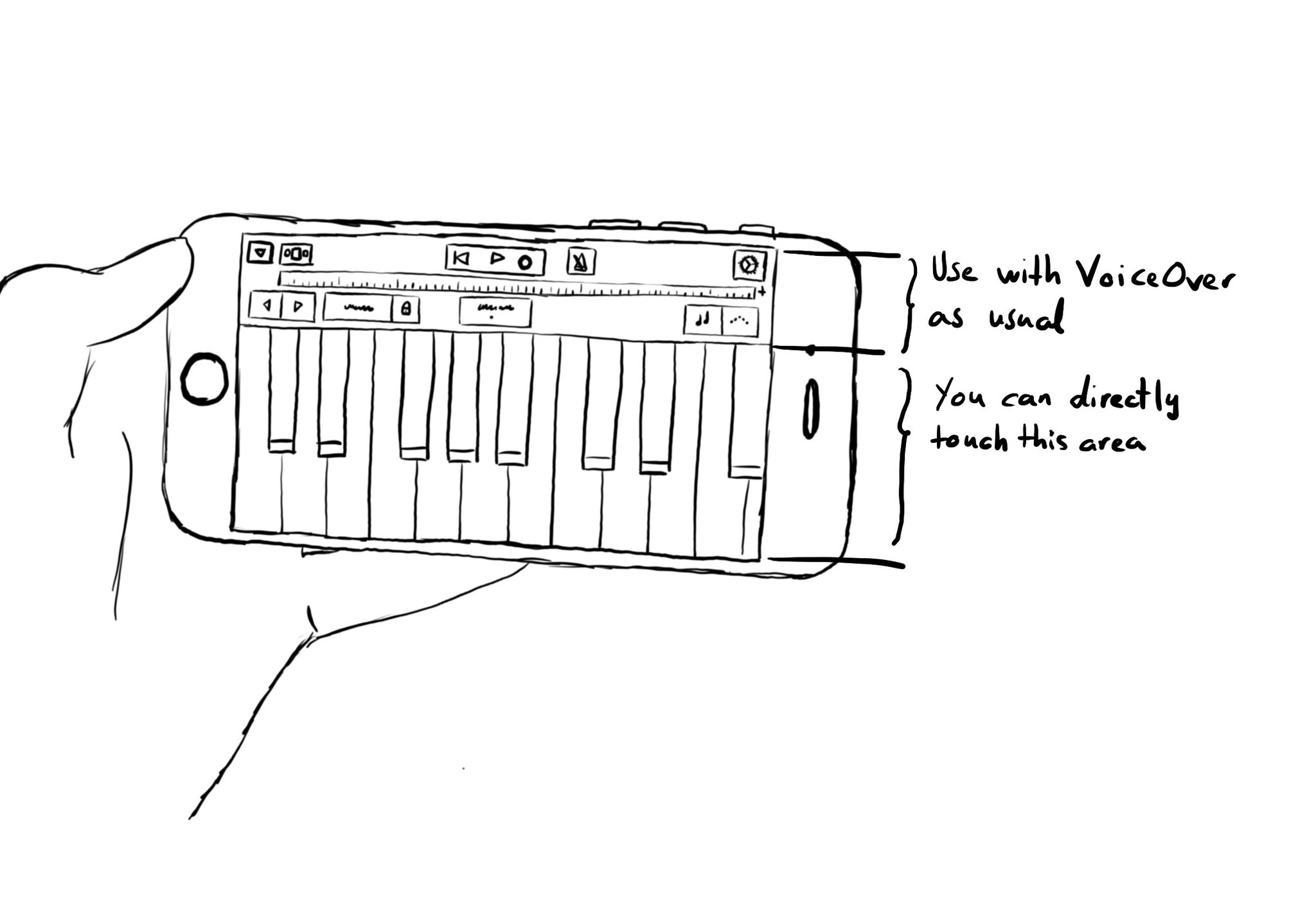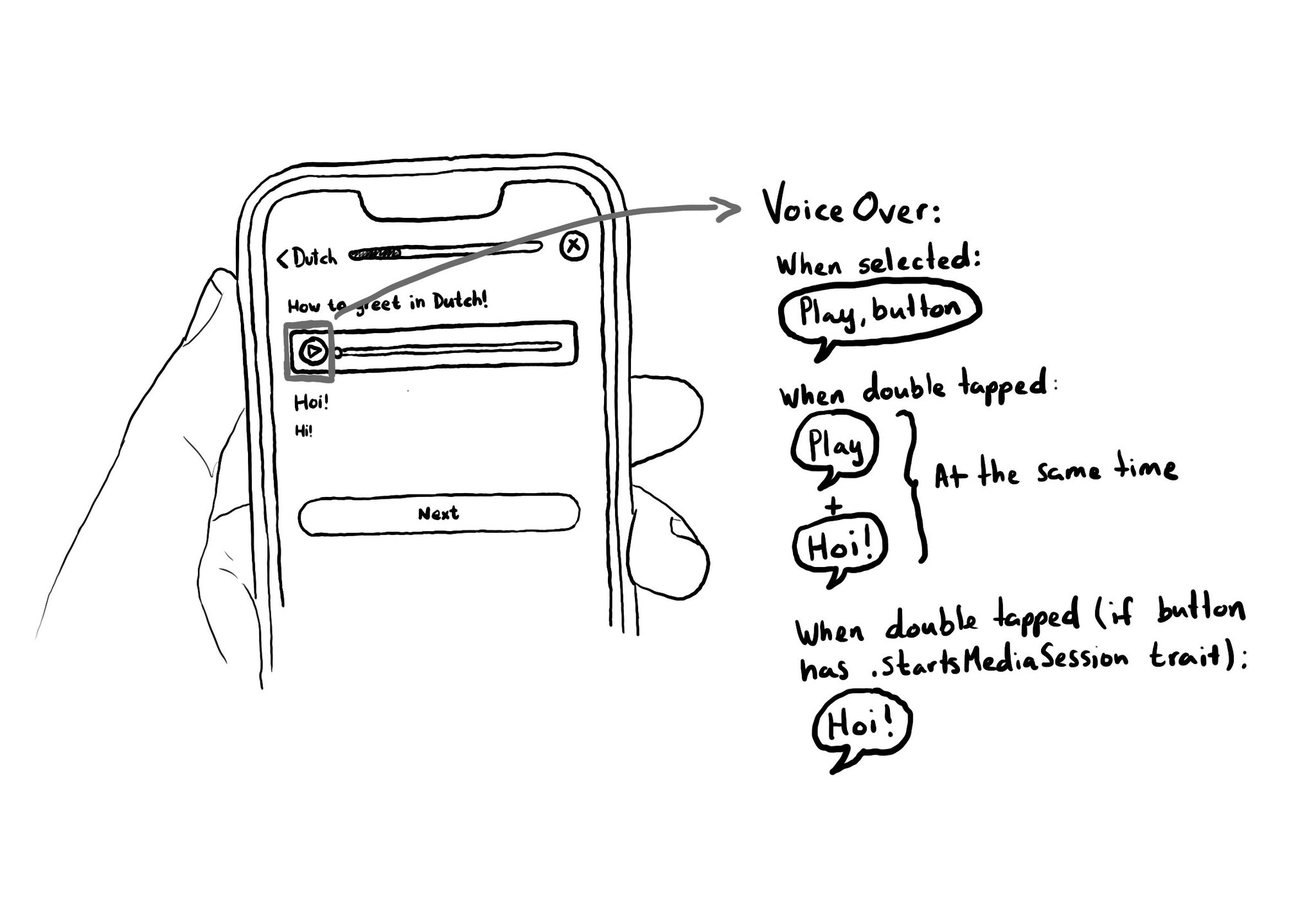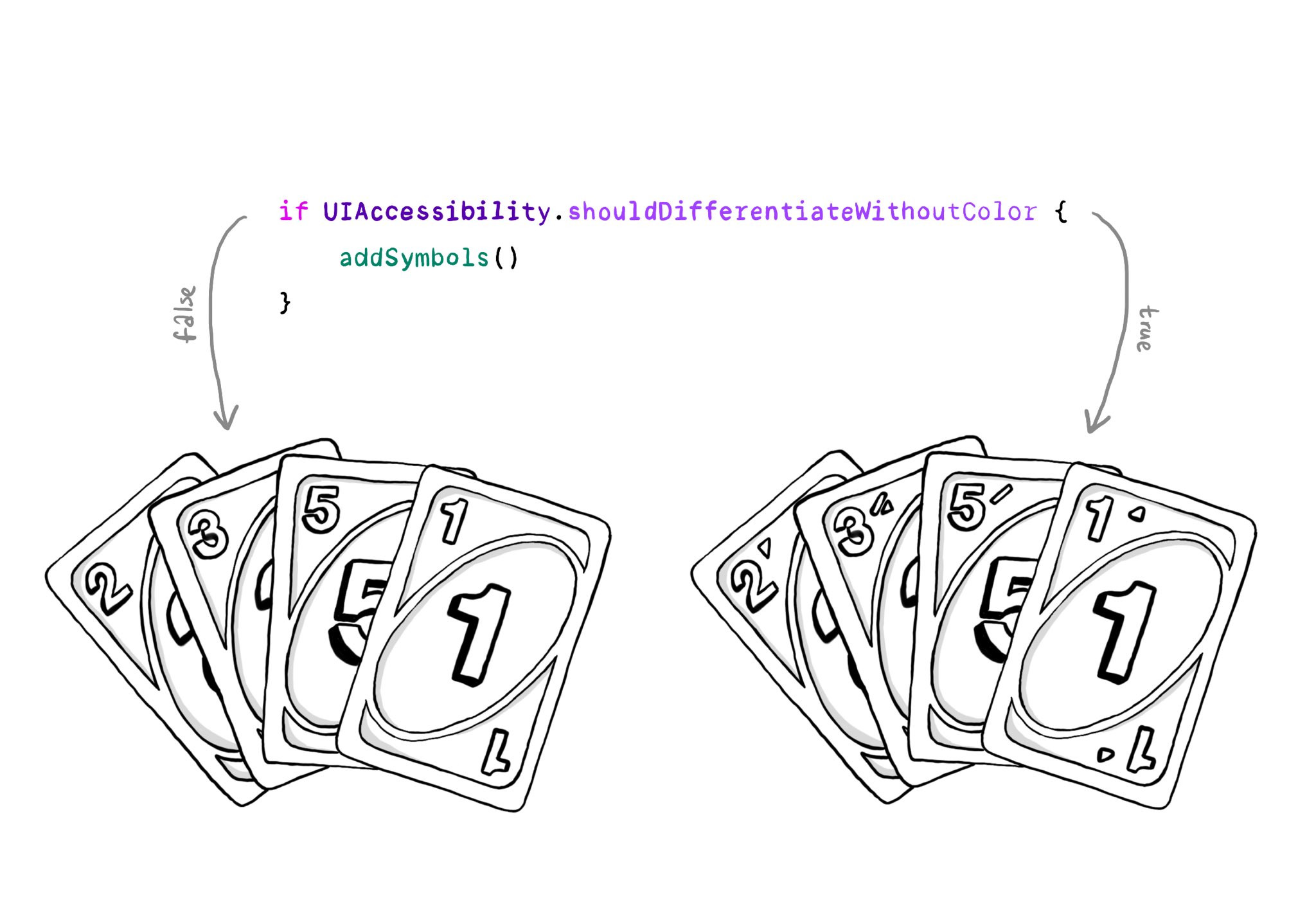Imagine playing a piano with VoiceOver. You'd have to find the key you want to play and then double tap. It would be a very difficult experience. With the .allowsDirectInteraction accessibility trait, VoiceOver passes through touch gestures.

Use carefully! And only when it really makes sense to be able to handle controls directly with touch. Other examples could be a drawing app or some games.
You may also find interesting...

When interacting with a button with VoiceOver, the accessibility label is repeated to the user. If you are playing some audio, it could be difficult to listen to it properly. To avoid that, you can add the .startsMediaSession accessibility trait.

Make sure you support Dynamic Type up to the largest text size available. Take into account that there are five extra accessibility sizes available from the Accessibility Settings. It can make a huge difference for lots of users.

You should convey important information in multiple modes, not just color. If you are still required to do so, at the very least you should complement that info with other modes, like symbols, if the user requested differentiation without color.